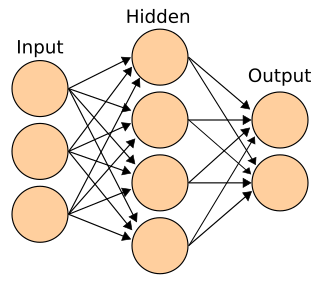
Cognitive science is the interdisciplinary, scientific study of the mind and its processes with input from linguistics, psychology, neuroscience, philosophy, computer science/artificial intelligence, and anthropology. It examines the nature, the tasks, and the functions of cognition. Cognitive scientists study intelligence and behavior, with a focus on how nervous systems represent, process, and transform information. Mental faculties of concern to cognitive scientists include language, perception, memory, attention, reasoning, and emotion; to understand these faculties, cognitive scientists borrow from fields such as linguistics, psychology, artificial intelligence, philosophy, neuroscience, and anthropology. The typical analysis of cognitive science spans many levels of organization, from learning and decision to logic and planning; from neural circuitry to modular brain organization. One of the fundamental concepts of cognitive science is that "thinking can best be understood in terms of representational structures in the mind and computational procedures that operate on those structures."

Machine learning (ML) is an umbrella term for solving problems for which development of algorithms by human programmers would be cost-prohibitive, and instead the problems are solved by helping machines 'discover' their 'own' algorithms, without needing to be explicitly told what to do by any human-developed algorithms. When there was a vast amount of potential answers, the correct ones needed to be labeled as valid by human labelers initially and human supervision was needed.

Connectionism is a name of an approach to the study of human mental processes with many 'waves'. The first one appeared in the 1950s with Warren Sturgis McCulloch and Walter Pitts both focusing on comprehending neural circuitry through a formal and mathematical approach, and Frank Rosenblatt who published the 1958 book “The Perceptron: A Probabilistic Model For Information Storage and Organization in the Brain” in Psychological Review, while working at the Cornell Aeronautical Laboratory.
Computational neuroscience is a branch of neuroscience which employs mathematical models, computer simulations, theoretical analysis and abstractions of the brain to understand the principles that govern the development, structure, physiology and cognitive abilities of the nervous system.
Bio-inspired computing, short for biologically inspired computing, is a field of study which seeks to solve computer science problems using models of biology. It relates to connectionism, social behavior, and emergence. Within computer science, bio-inspired computing relates to artificial intelligence and machine learning. Bio-inspired computing is a major subset of natural computation.

The MIT Press is a university press affiliated with the Massachusetts Institute of Technology (MIT) in Cambridge, Massachusetts. The Press has been a pioneer in the Open Access movement in academic publishing and publishes a number of academic journals. The organization also operates the MIT Press Bookstore, which is one of the few retail bookstores run by a university publisher.

Computational Linguistics is a quarterly peer-reviewed open-access academic journal in the field of computational linguistics. It is published by MIT Press for the Association for Computational Linguistics (ACL). The journal includes articles, squibs and book reviews. It was established as the American Journal of Computational Linguistics in 1974 by David Hays and was originally published only on microfiche until 1978. George Heidorn transformed it into a print journal in 1980, with quarterly publication. In 1984 the journal obtained its current title. It has been open-access since 2009.

Christof Koch is a German-American neurophysiologist and computational neuroscientist best known for his work on the neural basis of consciousness. He is the president and chief scientist of the Allen Institute for Brain Science in Seattle. From 1986 until 2013, he was a professor at the California Institute of Technology.
Terrence Joseph Sejnowski is the Francis Crick Professor at the Salk Institute for Biological Studies where he directs the Computational Neurobiology Laboratory and is the director of the Crick-Jacobs center for theoretical and computational biology. He has performed pioneering research in neural networks and computational neuroscience.
Michael Anthony Arbib is an American computational neuroscientist. He is an Adjunct Professor of Psychology at the University of California at San Diego and professor emeritus at the University of Southern California; before his 2016 retirement he was the Fletcher Jones Professor of computer science, as well as a professor of biological sciences, biomedical engineering, electrical engineering, neuroscience and psychology.

A neural network can refer to either a neural circuit of biological neurons, or a network of artificial neurons or nodes in the case of an artificial neural network. Artificial neural networks are used for solving artificial intelligence (AI) problems; they model connections of biological neurons as weights between nodes. A positive weight reflects an excitatory connection, while negative values mean inhibitory connections. All inputs are modified by a weight and summed. This activity is referred to as a linear combination. Finally, an activation function controls the amplitude of the output. For example, an acceptable range of output is usually between 0 and 1, or it could be −1 and 1.
Computational cognition is the study of the computational basis of learning and inference by mathematical modeling, computer simulation, and behavioral experiments. In psychology, it is an approach which develops computational models based on experimental results. It seeks to understand the basis behind the human method of processing of information. Early on computational cognitive scientists sought to bring back and create a scientific form of Brentano's psychology.
In philosophy of mind, the computational theory of mind (CTM), also known as computationalism, is a family of views that hold that the human mind is an information processing system and that cognition and consciousness together are a form of computation. Warren McCulloch and Walter Pitts (1943) were the first to suggest that neural activity is computational. They argued that neural computations explain cognition. The theory was proposed in its modern form by Hilary Putnam in 1967, and developed by his PhD student, philosopher, and cognitive scientist Jerry Fodor in the 1960s, 1970s, and 1980s. It was vigorously disputed in analytic philosophy in the 1990s due to work by Putnam himself, John Searle, and others.
Paul Montgomery Churchland is a Canadian philosopher known for his studies in neurophilosophy and the philosophy of mind. After earning a Ph.D. from the University of Pittsburgh under Wilfrid Sellars (1969), Churchland rose to the rank of full professor at the University of Manitoba before accepting the Valtz Family Endowed Chair in Philosophy at the University of California, San Diego (UCSD) and joint appointments in that institution's Institute for Neural Computation and on its Cognitive Science Faculty.

Richard S. Sutton is a Canadian computer scientist. He is a distinguished research scientist at DeepMind and a professor of computing science at the University of Alberta. Sutton is considered one of the founders of modern computational reinforcement learning, having several significant contributions to the field, including temporal difference learning and policy gradient methods.
Perceptrons: an introduction to computational geometry is a book written by Marvin Minsky and Seymour Papert and published in 1969. An edition with handwritten corrections and additions was released in the early 1970s. An expanded edition was further published in 1987, containing a chapter dedicated to counter the criticisms made of it in the 1980s.

Olaf Sporns is Provost Professor in Psychological and Brain Sciences at Indiana University and scientific co-director of the university's Network Science Institute. He is the founding editor of the academic journal Network Neuroscience, published by MIT Press.

Yann André LeCun is a Turing Award winning French computer scientist working primarily in the fields of machine learning, computer vision, mobile robotics and computational neuroscience. He is the Silver Professor of the Courant Institute of Mathematical Sciences at New York University and Vice-President, Chief AI Scientist at Meta.

Evolutionary Computation is a peer-reviewed academic journal published four times a year by the MIT Press. The journal serves as an international forum for researchers exchanging information in the field which deals with computational systems drawing their inspiration from nature.
IEEE Transactions on Neural Networks and Learning Systems is a monthly peer-reviewed scientific journal published by the IEEE Computational Intelligence Society. It covers the theory, design, and applications of neural networks and related learning systems. According to the Journal Citation Reports, the journal had a 2021 impact factor of 14.255.











